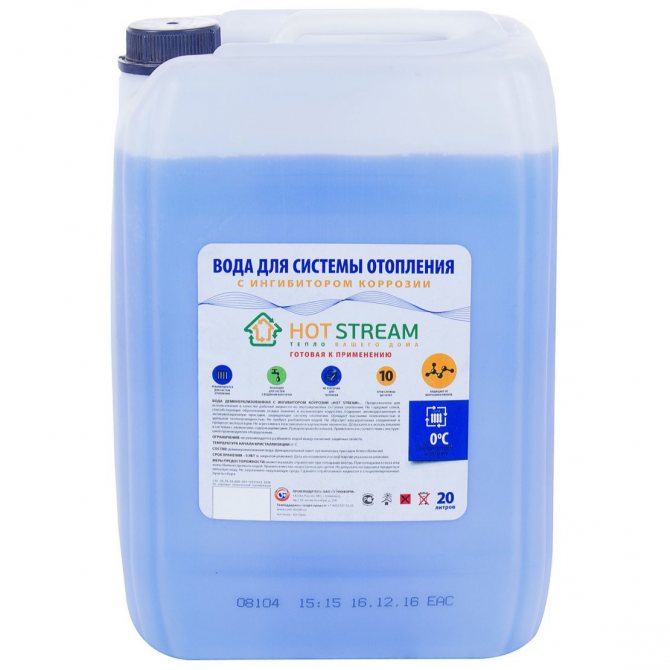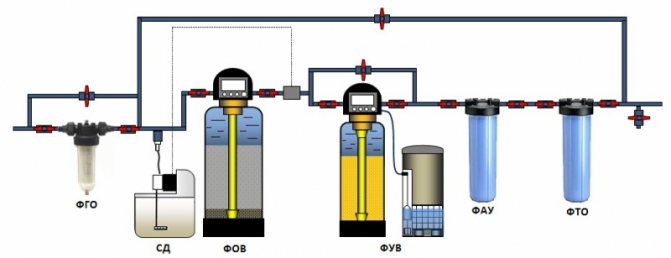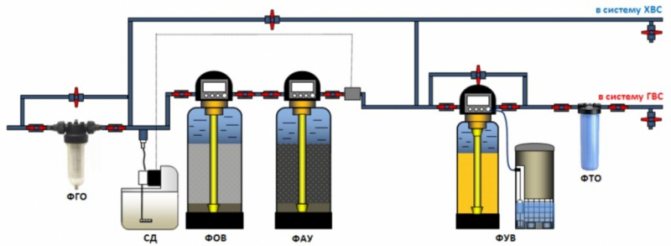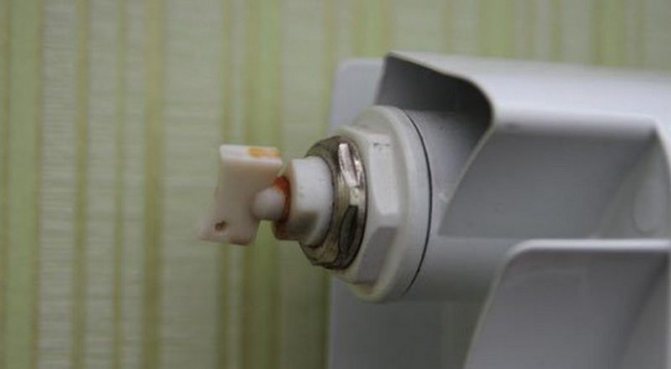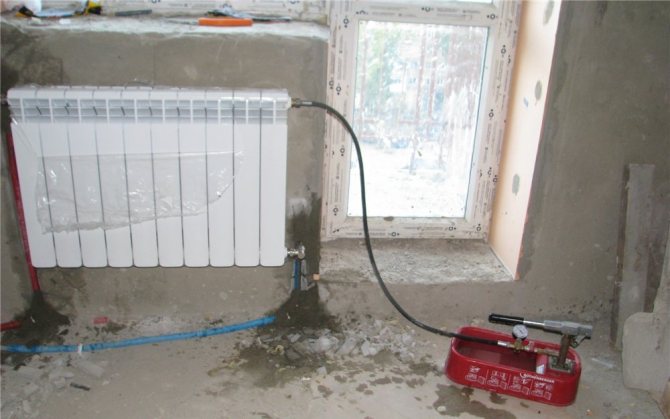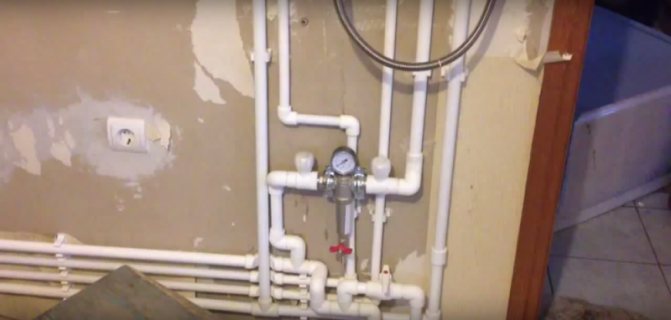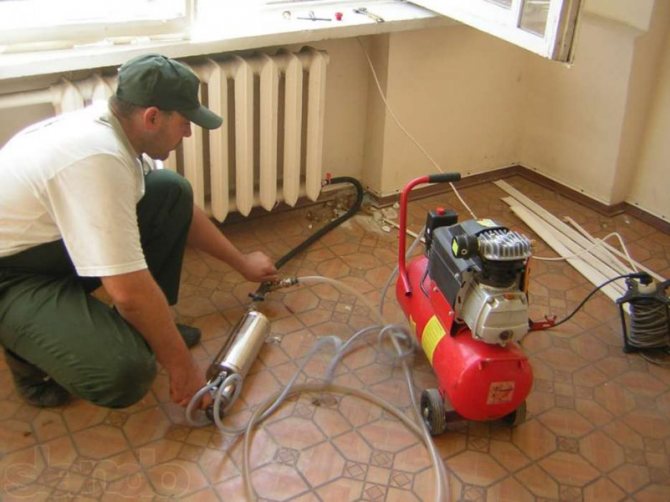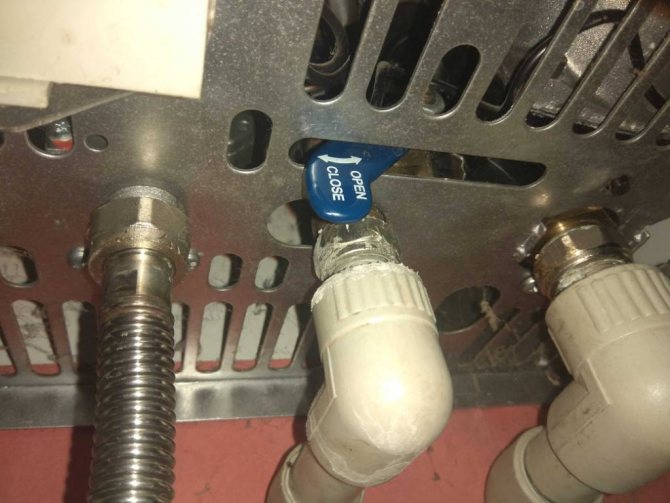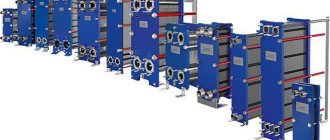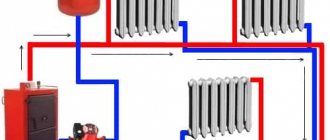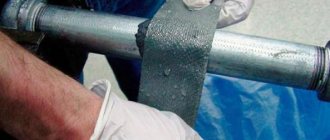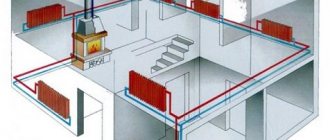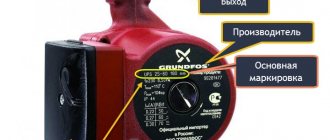When designing and building a private house, it is necessary to correctly select and install a heating system in the future. In apartment buildings, tenants do not have problems with this issue. Since the heating system in the apartment is centralized, and all the manipulations are performed by the appropriate services.
But private sector developers have to decide for themselves which heating system to choose. And you should find out how to properly set up the heating system of a private house or cottage. As a rule, many criteria are taken into account and the most optimal heating system is selected.
What is a heating system
A heating system is a whole complex of various equipment, which is designed to generate and transfer heat to the end consumer, that is, the tenant of the house. The heating system includes a heat source, pipes through which this heat will be transferred, and heating radiators.
The heat source, as a rule, is either gas, or electricity, or diesel or other fuel. The coolant that is transferred through the pipes is usually water or antifreeze antifreeze liquid. The storage tanks for heating systems act as a heat energy storage unit, they are built into the system circuit. Such a storage tank for heating allows you to store heat for subsequent supply.
Mixers are also used in modern automated heating systems. They mix hot water and chilled water from the return line in the heating system. The choice of the type of heating system must begin with the fact that it is necessary to decide what will act as a source of heat. In other words, you need to know if the water will be heated using electricity, gas or ordinary firewood. Next, select the appropriate boiler. Then the type of pipes is selected, or the option without pipes is selected, that is, the water flows directly into the radiator.
Boilers are still one of the most popular types of heating systems today.
On the territory of our country, the heating season, as a rule, lasts about two hundred days a year. When choosing a heating system, do not forget about this. The heating system is cleaned at the end of the season, and before the heating season it is rinsed and cleaned again.
Heating systems today are regulated very differently than their predecessors. Heating systems now are systems that maintain the required thermal characteristics in real time. Therefore, in such systems, a fundamentally new hydraulics of the heating system is used, in which there is a constantly changing mode. To maintain the appropriate temperature in the heating system, a thermometer is used for heating systems, which is built in separately.
After the heating system is installed, the pipes are checked and then water is poured into the system. Or, in another way, the heating system is fed with water in order to check the new system. Thus, the adjustment of the heating system is carried out, which is started for the first time. The heating system must be flushed for three hours. And the water after rinsing must be clean.
This procedure is necessary to remove construction debris that could appear there during the installation of the system. Then the second batch of water is heated to boiling.Boiling water also helps to get rid of oily debris. Any heating system must be flushed twice a year. Some owners of private houses are interested in how to pump water into the heating system to flush it. But first, you need to consider how to prepare the water for flushing.
Heating water preparation
When designing your own house or a private project, one cannot but take into account the very impressive costs of the heating system. But not only do you need to choose the most optimal system, decide on the power source, here the costly issue will be water preparation for heating systems in a private house. The quality of heating and the long-term operation of the system depend on how high-quality, soft the water in the heating system will be.
Heating systems: how not to be mistaken with a choice?
There may not be so many heating systems. But you will have to choose one and each consumer will have to do it on their own. It is in central heating systems that the choice is not great, what this budget can be spent on, or what opportunities are there for a certain object or objects that will have to be heated, that system will be installed. Private traders are forced to make decisions and bear responsibility on their own.
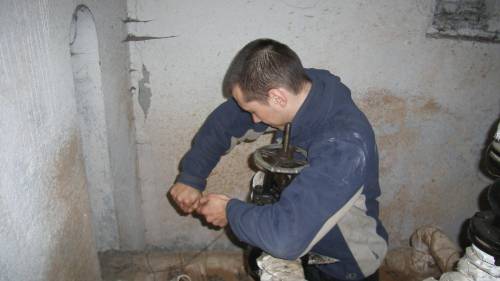
The table below shows the features of the application of various heating systems. So any user can navigate at least at first, which can be immediately dismissed.
A heating system is understood as a set of equipment for generating, transferring and supplying heat to the end consumer. In general, the heating system consists of a heat source (as can be seen from the table - different types of gas, electricity, diesel fuel), heat pipes directly from heating devices. In an apartment, these can be radiators or batteries.
Heating can be done with liquid or with hot steam. They can be heated with plain water or with a special liquid with antifreeze that does not freeze. And since heating comes with water, then all the problems associated with it result in the problems of softening and preparing water for the heating system.
The choice of a heating system should be, first of all, with the solution of the question: what source will the consumer use? That is, will the water be heated using wood, gas or electricity. By the way, the water treatment system also depends on such nuances. the influence of heat from electricity and heating water from wood have different spheres of influence on the surface.
Based on the selected source, the corresponding boiler is also selected. After that, it is already chosen how the heat will be supplied to the end consumer - immediately or through the radiator pipes. Immediately - these are warm floors, warm walls, that is, there is no branched heating system through pipes. But the most popular heating systems are still boiler rooms. Boilers can be single or double-circuit. That is, they can directly heat the heat carrier, or they can also heat water for the heat carrier.
When working with heating systems, it is important to remember the peculiarities of their operation. Such systems are used in Russia, for example, for an average of 210 days a year. For the rest of the time, the system is preserved, having previously prepared it for this process. Likewise, the system is prepared again before the start of the heating season. Washed out. Remove debris, do easy cleaning.
After installing the system, check the pipes for the presence of debris in them. After that, cold water is launched into the system until, at maximum pressure, and washed for no more than three hours. The water from the system should come out clean, after such a flush. This is how they get rid of construction waste after installation, and after conservation they wash out the lime, which is often left inside the system so that bacteria do not grow there and sludge-like growths do not form.
After that, the first batch of water is heated and boiling point water is already introduced into the system. Flushing with boiling water helps to remove oily residues from the system and partially flushes out rusty residues. Even if there is a water purification system, the heating system will have to be flushed at least twice a year, before conservation and before starting the system.
How to properly prepare water for work in the heating system?
It turns out that if you operate a heating system, then very high requirements should be presented to the quality of water. If in twenty years the consumer does not want to endure the costs due to pipes overgrown with dirt, rust and scale, then it is very important to install the correct purification system and use exclusively prepared water for heating. And moreover, such water should already enter the boiler, for example, for heating.
Working with poor-quality, first of all, hard water, there is a big risk of getting a quick failure of heating systems. Therefore, the preparation of water for the heating system is, first of all, softening, provided that the water is supplied from a centralized water supply system.
If you do not use cleaning, you will have to spend quite a lot on permanent descaling so that the pipes do not clog and the boiler does not explode. And corrosive chemicals damage equipment and are expensive.
Therefore, you can prepare only by purifying the water. Although progress has gone far ahead, the main stages of cleaning remain the same:
- Mechanical cleaning - elimination of any solid impurities;
- Deposition or sorption;
- Cleansing from harmful bacteria and foreign salts, including glandular;
- Directly water treatment for the heating and water supply system.
In short, the ideal water treatment for a heating system would look like this. If the heating system is located in frosty areas, then antifreeze will be added to it without fail. If these are hot countries, then the water can be supplemented with special substances so that silt does not form, and algae does not grow from the heat.
A variety of devices can be used as softeners in such a system. Due to their simplicity, the AquaShield electromagnetic water softeners are extremely popular. They make the water not only softer, but also thoroughly clean the internal surfaces of the equipment from old scale.
Good old cationic resins are often used for softening. There is no substitute for water treatment. Better than these devices, nothing will make the water softer. But over time, the quality of such cleanings decreases and the resin needs to be changed. After replacement, the quality of cleaning returns. But such replacement parts are quite expensive and it is expensive for heating systems. True, in industry, such systems are used with recovery tanks. Then the costs are reduced, albeit not much.
Water can also be softened with conventional chemicals. But in this case, there is a risk of getting other growths on the equipment. And here's how to remove them is not clear, tk. it will no longer be scale.
Oxidizers are used to eliminate ferruginous deposits. Iron salts become heavier after reaction and can be easily removed from equipment.
And another fairly common stage in heating systems is deaeration. With its help, dissolved gases are removed from the water.
We learned that preparing water for heating systems is a difficult multi-stage process that allows you to obtain water of a certain composition, which would not lead to the formation of various harmful build-ups inside the equipment.
How to properly prepare the water?
So, in order for the heating system to serve for many years, it must be flushed at least twice a year. Since the system is flushed exclusively with water, there must be special requirements for water.What are the requirements for the water that the heating system is flushed with? And how is the preparation of water for the heating system carried out at this time? Next, we will consider the question of how to prepare water for the heating system on your own. Why are there strict requirements for water?
Using untreated water to flush the heating system can result in:
- to the destruction of pipes;
- to the formation of scale;
- to breakdown of heating radiators;
- to reduce the permeability of pipes, the amount of water in the heating radiator, thus decreases;
- to reduce the speed of the coolant;
- to excessive consumption of fuel and unplanned and unreasonable material costs.
As you can see from the above evidence, the speed of water in the heating system will decrease significantly, and the batteries will no longer warm us so much in winter.
Too hard and too soft water
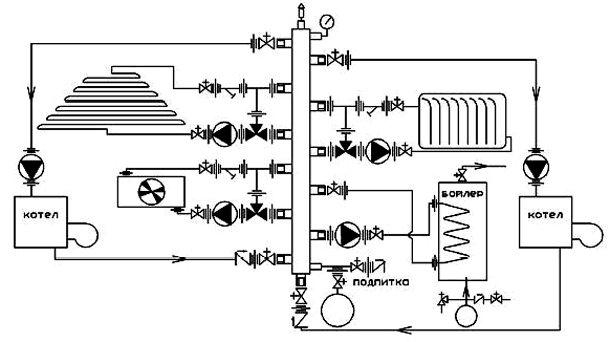

An example of a boiler room diagram for a heating system that provides quick installation and comfortable heating and preparation of hot water in a private house, cottage, dacha.
Normal hardness values are 7-10 mg-eq / l. If this value is exceeded, it means that the water contains an excessive amount of calcium and magnesium salts. When heated, the salts precipitate, known as scale. Accumulating inside pipes and radiators, scale prevents heat transfer and causes wear and tear of the heating system.
The most affordable way to soften water is boiling. Heat treatment removes carbon monoxide and therefore significantly reduces calcium hardness. However, some calcium remains in the water, so boiling will not completely remove the hardness.
Another cleaning method is the use of filters with scale inhibitors (neutralizers), such as lime, caustic soda, soda ash. Hard water is also passed through ion exchange resin filters, with the potassium and magnesium ions being replaced by sodium ions.
The use of magnetic softeners is a non-reagent water softener. Under the influence of a magnetic field, the properties of water change so that potassium and magnesium salts lose their ability to form in the form of a solid precipitate and are released in the form of loose sludge. However, salts still remain in the water and need to be removed. In addition, this method is not so effective at water temperatures above 70-75 degrees (that is, the temperature typical for boilers, water heaters and boilers).
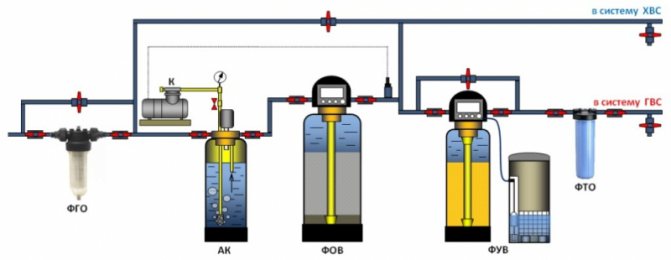

Coarse cleaning and deferrization of all water, water softening for heating systems and hot water supply (DHW).
Reverse osmosis purification consists in forcing water through a special membrane that traps harmful substances. This allows you to completely remove calcium and magnesium salts that cause limescale. But this method also has disadvantages: the high cost of treatment equipment and the consumption of a large amount of water during cleaning (for 1 liter of clean water, about 2 to 10 liters are drained into the sewer).
Too soft demineralized water, for example, rain or melt water, is no less harmful to the heating system than hard water, since the calcium salts contained in the water neutralize acidic reactions, slowing down corrosion. Therefore, before using rain or melt water for the heating system, you should let it settle for several days and fill it only after making sure that its pH level is within 6.5-8, but not lower. This is especially important if the routing was made of non-galvanized pipes that are prone to corrosion in the first place.
Related article: Ways to insulate a house with curtains
How to soften water?
Therefore, it is so important to prepare the water for flushing the pipes. The first requirement for water, with the help of which the heating system is flushed, is its softness. Therefore, they try to soften the water. There is more than one water softener for heating systems on the market today. Further, the water is purified from various impurities, then defended and purified from harmful microbes and bacteria. This is an exemplary water treatment for a heating system for flushing the heating system.
If we consider the process of purification and preparation of water, then in brief this process will look like this. In order to soften water, various devices are used, for example, AquaShield. Such devices not only make the water softer, but also clean the inside of the equipment from scale. Previously, cationic resins were used to soften water. Also, water can be softened with various chemical reagents.
Methods for deironing water
For technical needs, such water is suitable, in which the iron content will not exceed 1 mg per 1 liter. The ideal indicator would be the content of 0.3 mg of iron per 1 liter of water. If the water is oversaturated with iron, it can contribute to the formation of sludge on the inner surfaces of elements of the heating system, such as pipes. Also, an excess of iron can lead to the growth of bacteria. This can happen even at a temperature of + 30 degrees.
Deironing water
The simplest method of deferrization is water sedimentation. Heating water interacts with oxygen and iron oxidizes and turns into a rusty sludge. To apply this method, you need a 200-300 liter tank and an oxygen pump. A compressor or a spray installation can be used as such a device. If the tank is small, an aquarium compressor can also be used.
Advice: If the water contains too much iron, up to 5 mg ha 1 liter, then special filters can be used.
The safest method of water purification is the ultraviolet method. During such cleaning, only harmful components from the composition of the water are affected. The speed of water in the heating system is high - for example, this method allows you to remove harmful elements from the water in just a few seconds. Thus, water treatment for the heating system is a very important point to pay attention to.
For more information on preparing water for heating, see the video:
What kind of water can I fill?
The chemical composition of the water and its suitability for flushing the heating system can be determined using various tests. Such tests are done in specialized chemical laboratories. Having received the test results, there is no doubt about the reliability of the results and their high accuracy.
If taking water samples to a specialized laboratory is an overhead and troublesome business, then you can use various kits for water analysis at home. These express kits allow you to determine the hardness of water and its ph level. With the help of these tests, it is also possible to determine various impurities in water, this is iron, various sulfides, nitrites, nitrates, etc.
After determining the composition of the water at home or after receiving the analysis results from the laboratory, it is necessary to bring the water indicators back to normal. It is believed that about 0.05 mg / m3 of dissolved oxygen should be present in the water. The acidity level of the water should be in the range 8.0 - 9.5. The iron content in water should be no more than 0.5-1 mg / l. The indicator of water hardness should be in the range of 7-9 mg eq / l.
Such analyzes must be carried out twice a year.
Various microbes and microorganisms that are contained in the water, naturally, greatly impair its quality. Thanks to these pathogenic microbes, a mucous membrane can form on the pipe walls.
Why use a softener to reduce water hardness
A filter can be used as a water softener.What dangers can lie in wait for the owners of the heating system who do not use special filters to reduce the hardness of the coolant? First, calcium and magnesium salts, which are found in large quantities of hard water, are converted over time into limescale.
Secondly, these insoluble deposits attach to the pipe walls and reduce their permeability. This does not allow the use of water consumption control and metering devices. Pipes gradually fail. The worst thing about this situation is that the process of deposition of insoluble residues and the formation of scale is a long process. It is invisible to the users of the system. Therefore, water softening filters are required.
Chemical compounds in the heating system - as a water softener
Chemicals could be an alternative to using filters. But they have not become a worthy replacement. Polyphosphates are used from chemical compounds and reagents. Polyphosphates prevent scale particles from bonding to each other. But in this case, these chemical reagents must be constantly present in the heating system. And another disadvantage of chemical reagents is that they do not adjust to the new level of water hardness.
The second type of chemical reagents that are used to soften water hardness are reagents for prophylaxis or for purifying water after its use. You can use a heating concentrate that is compatible with antifreeze. It is used for corrosion protection. Now you can return to the question of how to pump water into the heating system yourself.
The first and most important stage of work
The main thing that should be done before planning water treatment measures for the heating system is to conduct a chemical analysis of the composition of the water.
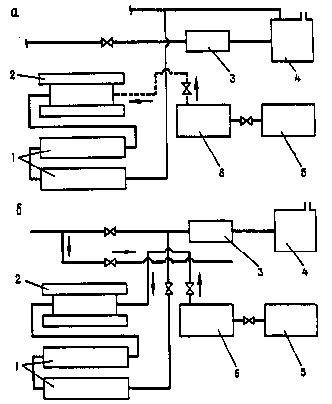

Known (a) and proposed (b) schemes for the preparation of water for heating: 1 - water heater; 2 - steam-water heater; 3 - refrigerator; 4 - feed tank; 5 - high pressure manifold; 6 - low pressure manifold; steam; condensate.
You can carry out tests at home using test kits for aquariums (they are sold at any pet store). However, in order to obtain more accurate values and the most efficient preparation of water for heating, you should use the services of a certified laboratory.
Water for analysis is collected in a plastic bottle from under non-carbonated drinking water with a volume of 1.5 liters. It is unacceptable to use bottles of soda and other drinks. The cork and bottle are well washed with the same water that is taken for analysis, while detergents should not be used. Preliminarily, the water is drained for 10-15 minutes in order to exclude the ingress of stagnant water into the sample, as this may affect the test results.
To prevent the saturation of water with oxygen dissolved in the air, it is drawn in a thin stream so that it flows down the wall of the bottle. Water is poured under the neck. The bottle is tightly wrapped with a cork so that air does not penetrate under it. Oxygen provokes chemical processes, and this can also affect test results. If it is not possible to immediately take the samples to the laboratory, then the water can be stored in the refrigerator (not in the freezer!), But not more than two days.
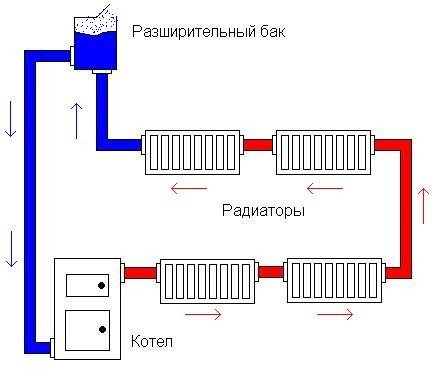

Heating system.
Comprehensive water analysis includes checks for the following indicators:
- rigidity;
- iron;
- manganese;
- pH (degree of acidity);
- permanganate oxidizability (shows the presence of organic substances in water);
- mineralization;
- ammonium;
- oxygen saturation;
- turbidity, color, odor.
If necessary, samples are taken for the presence of microorganisms.Some of them, such as legionella and amoeba, are not only capable of causing serious harm to health, but can also settle inside the tubes, forming a slimy microbial film. This promotes corrosion and degrades the heating quality.
Related article: Round gazebos for summer cottages - what to choose and how to build
How to pour water into the heating system
There are two types of heating systems. It is a closed type heating system and an open type heating system. In an open system, water comes into contact with air. This happens through the tank, which is located at the highest point of the heating system. In a closed system, water does not come into contact with air.
To pour water into a closed-type heating system, you must:
- Have a pump for drawing water from a well or reservoir. Using a hose that is connected to the pump and to the drain pipe, pump water. All taps open at full capacity. It is important to prevent overheating in the heating system, so you need to constantly adjust the water supply.
- Particular attention should be paid to the pressure with which the pump delivers water, and to regulate the pressure required for the heating system. And this is 1.5 atm.
- To calculate the volume of the heating system, you need to know how many liters are in the radiator and one running meter of the pipe.
